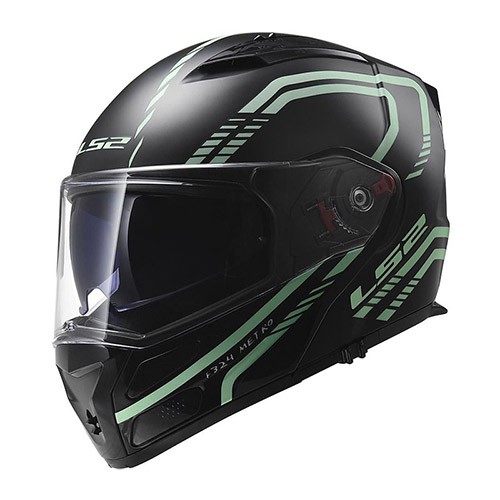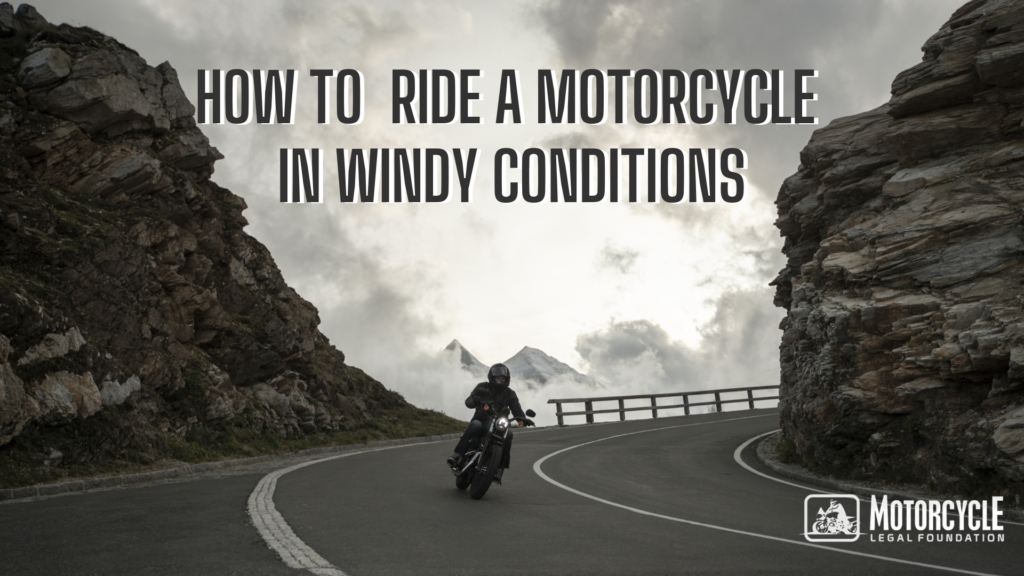Riding on windy days can add an extra challenge to stay safe and arrive at your destination on time. The type of motorcycle you ride and how you position your body will affect your ability to ride in the wind. We’ll cover the following topics:
- What are the best motorcycles for windy conditions?
- How to adjust your body position for optimal safety
- Essential factors that can affect your ride
What Type of Motorcycle is Better for Windy Days?
One of the great debates about riding in the wind is what type of motorcycle will ride the best in those conditions. What would you choose if you had the option to choose from more than one motorcycle type (or perhaps you happen to have a fleet in your garage)? Heavier or lighter? Shorter or taller? Minimal or full fairing? All those options factors into how the motorcycle rides in a windy situation.
Compare a touring bike with a large fairing, saddlebags, and larger highway-capable engine to a standard with a small front fairing and smaller engine. The wind is less likely to push a touring motorcycle around due to its weight. A standard motorcycle would be able to escape the path of the wind more than a taller motorcycle. A motorcycle with a full fairing may channel the wind around the rider with more than a little or no fairing option. So is there one motorcycle that would work better than others? No, not necessarily.
Motorcycle Riding Techniques for Windy Conditions
Wind can come from all directions, and your motorcycle can help alleviate the effects of the wind pushing your motorcycle around the road. Another significant advantage you have while riding is your body positioning. It can counteract the wind’s force on you and your motorcycle, making it less hazardous on a windy day.
Let’s take a look at different scenarios and determine how to ride safely in each:
Riding in Crosswind (Wind comes from either side, pushing your left or right)
Crosswinds will dramatically affect your riding as they can quickly push you off the road or into another traffic lane with a strong gust. Your frontal area can affect how much the wind can push you. Think of yourself as a sail, and the larger area you have for the wind to contact, the more you will feel its effect.
The best way to handle crosswinds is to loosen your body up (think about relaxing your grip, knees, etc.), and don’t panic when you feel the wind moving your body. Ride behind the windscreen as best as possible. You can also stick a knee out in the direction the crosswind comes from to catch the oncoming wind flowing around the motorcycle. For example, stick your left knee out if the crosswinds come from the left. It produces a sail that will pull your body (and motorcycle) to the left and counteracts the effect of the crosswinds. The same can be said for a crosswind coming from the right. Over time you will learn to judge how far to stick your knee out to counteract the crosswinds.
Beyond sticking your knee out, you can lean the motorcycle in the direction of the crosswind to counteract the effects. It will require a slight pressure on the handlebars in the crosswind direction, but it will have a similar effect to sticking your knee out.
You can also try to counterweight in the direction of the crosswind. For example, with a crosswind coming from the left, you could adjust your sitting position to that side of the seat, which will move your body weight slightly to that side. Apply these three methods to help counteract the crosswind for safer riding!
Riding in Headwind (Wind coming from in front of the motorcycle)
Headwinds are a little easier to deal with on a motorcycle than crosswinds. Therefore, they can be less dangerous when riding a motorcycle. The key to minimizing the headwind risk is reducing the frontal area that the wind can push against. It’s best to ride low behind the windscreen and front fairing and tuck your arms and legs close to the motorcycle. Be as streamlined as possible and reduce the friction of the wind against your body. A headwind will slow you down, so be cautious that it doesn’t compromise your safety. If it slows your riding down enough to inhibit smooth traffic flow, you may want to take a break or choose a different route to avoid impeding traffic.
Riding in Tailwind (Wind comes from behind the motorcycle)
Tailwinds may be the easiest of the three to ride in as they don’t usually push you around like a crosswind or slow you down as a headwind does. Tailwinds will come from behind the motorcycle and cause you to ride faster than you intend. They are great for gas mileage but require extra stopping distance since they push you forward. You will want to ride in a similar position to a headwind, low and tucked in. Be careful that they don’t cause you to ride too fast for traffic or road conditions, and stay within your comfort zone.
6 Tips for Riding Your Motorcycle in the wind
The wind isn’t the only thing to consider concerning safety while riding. Other factors can aid your ability to ride in the wind or make it more dangerous to ride on a windy day. These are other considerations to be aware of:
- Tank and saddlebags can add drag – Tank and saddlebags can add a frontal area that wind can catch on. Saddlebags add extra area with a headwind or tailwind and can cause extra drag as air moves around the motorcycle. It can have the same effect as a crosswind as it hits you from either side. Be cautious of adding larger bags on windy days.
- Be aware of wind blocks – Large trucks, buildings, hills, mountains, etc. will shield you from the wind temporarily but can create wind tunnels when you ride out from behind them. Be cautious that trucks can push a lot of wind around them that can either suck you in toward them or push you away and into another lane. Buildings and landmarks won’t suck you in, but they can give you a rush of air as you ride out from behind them. Be prepared.
- Choose the safest lane – Is there a best or safest lane to ride in? There isn’t going to be a one-size-fits-all answer with lane choice because it will depend on the road, other traffic, and weather conditions. On a two-lane road, you may choose the middle or left, as oncoming traffic may push you to the right (or road shoulder) as they pass. The left or middle would give you room to move to the right as needed. You may bias to one side of the lane to counteract crosswinds and traffic, so there isn’t a perfect section to stay in. On a multi-lane section of road, you may need to bias to one side or ride in a particular lane to avoid crosswinds or stay safe around other traffic.
- Check the weather – Before you leave on a ride, be sure to check the weather forecast. If it is projected to be a windy day, pick a route that will be less likely to have the wind. If there isn’t the best route to avoid the wind, perhaps choose to stay home. It may not be worth the risk of riding in hazardous conditions.
- Combat wind fatigue – One side effect of windy conditions that most riders don’t think about is fatigue. Fighting to stay in your lane, counteracting crosswinds, riding slower than expected, and continually adjusting your riding position can wear you out quickly. If you’re on a longer ride, stop after some time to relax and allow your muscles to take a break. It will help you mentally and physically to relax your mind and body.
- Protect your eyes – You are hopefully following ATGATT (all the gear, all the time) and already wearing eye protection. Still, windy days are tough on the eyes. Winds carry small debris like sand and small rocks that can be blinding at speed. These days, a full-face helmet or wrap-around motorcycle eyewear can really pay for themselves in safety and security.
Key Takeaways
- Wind can come in any direction while riding. Make yourself small by tucking behind your windscreen or front fairing to allow the air to travel around you best. Crosswinds can push you from side to side, and you can counteract that by extending a knee into the crosswind to make a sail. That will direct you into the crosswind and help to negate its effect.
- There isn’t a perfect motorcycle for windy riding days. Smaller motorcycles have a less frontal area to catch the wind, and heavier motorcycles are less likely to be pushed around by the wind. Choose the best for your body size and your riding skill.
- Don’t add large saddle or tank bags for your ride on a windy day. They add a frontal area that makes you a larger surface for the wind to push against. It may be a good choice to leave them home on windy days.
- Watch out for larger objects that temporarily block wind, like trucks, hills, and buildings. The wind around them will push you away from them as you pass.

